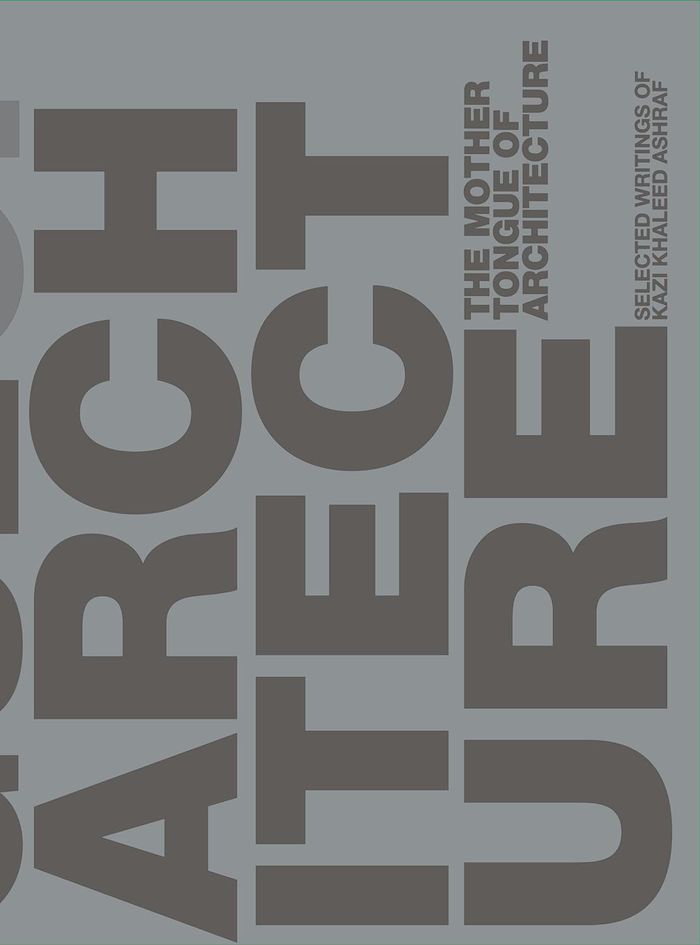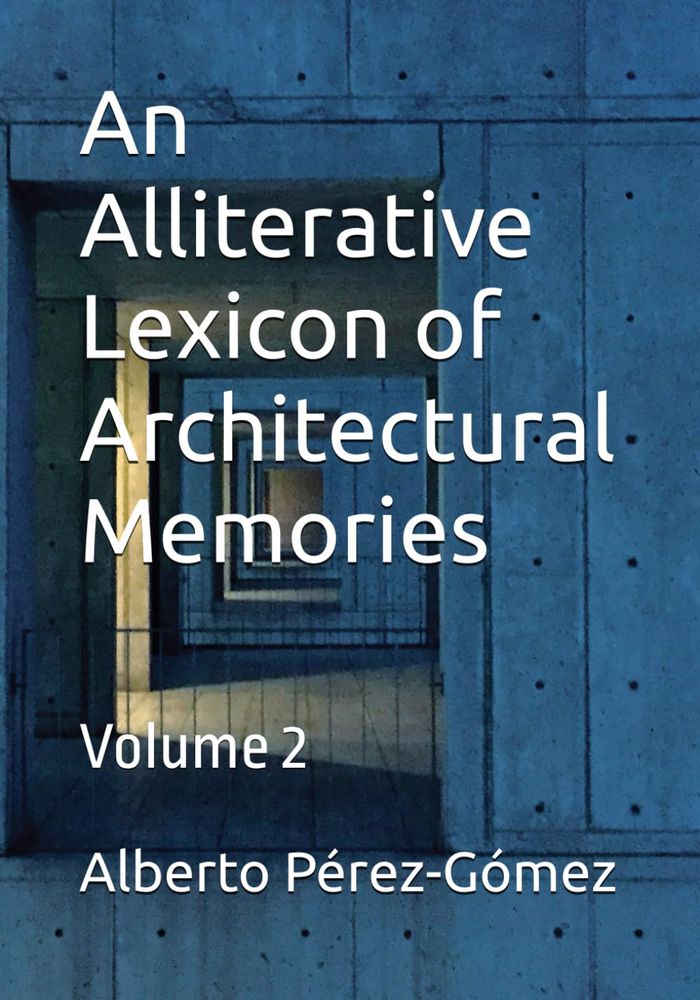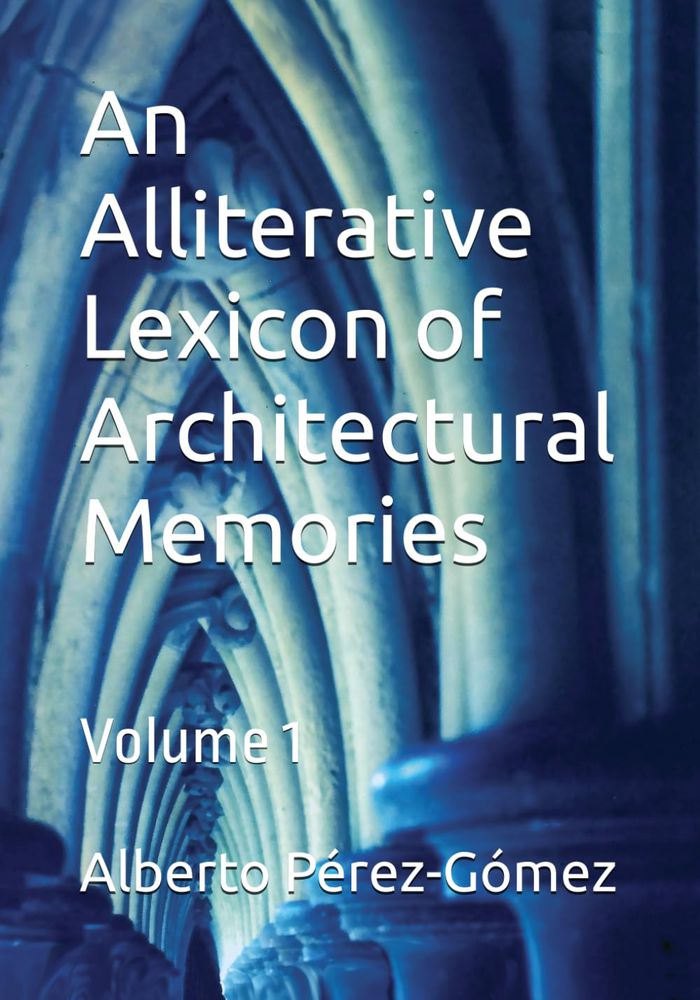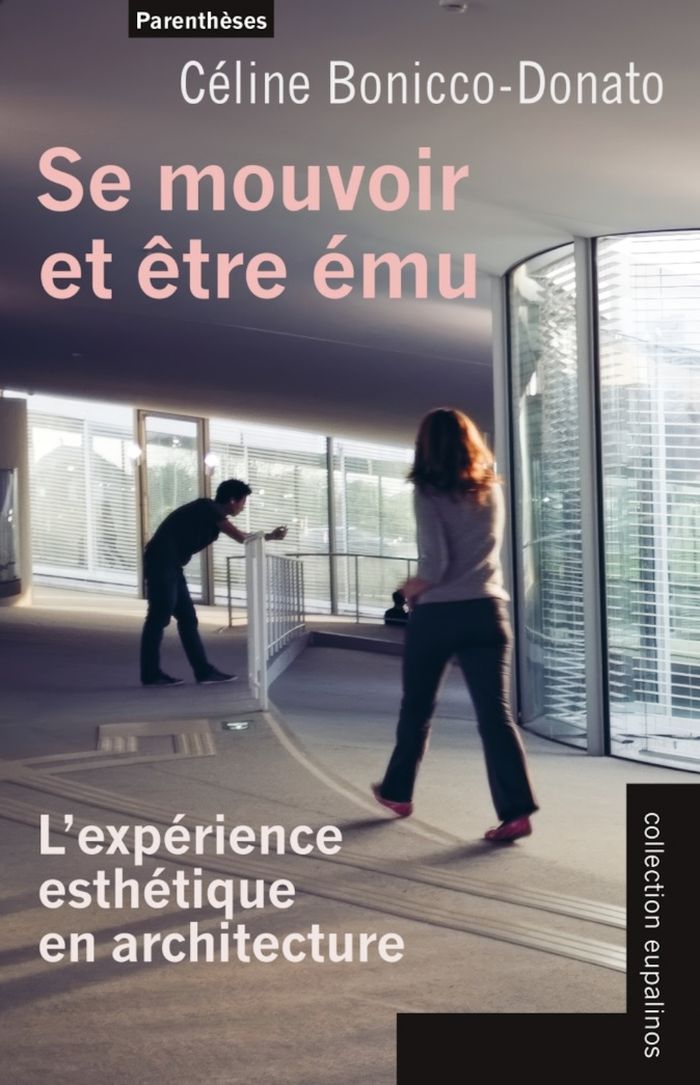$39.50
(disponible en magasin)
Résumé:
First published in 1996, "The eyes of the skin" is a classic of architectural theory. It asks the far-reaching question why, when there are five senses, is one single sense-- sight-- so predominant in architectural culture and design? With the ascendancy of the digital and the all-pervasive use of the image electronically, the subject is all the more pressing and topical(...)
The eyes of the skin, 4th edition
Actions:
Prix:
$39.50
(disponible en magasin)
Résumé:
First published in 1996, "The eyes of the skin" is a classic of architectural theory. It asks the far-reaching question why, when there are five senses, is one single sense-- sight-- so predominant in architectural culture and design? With the ascendancy of the digital and the all-pervasive use of the image electronically, the subject is all the more pressing and topical since the first edition’s publication. Juhani Pallasmaa argues that the suppression of the other four sensory realms has led to the overall impoverishment of our built environment, often diminishing the emphasis on the spatial experience of a building and architecture’s ability to inspire, engage and be wholly life enhancing. For a student reading this text for the first time, "The eyes of the skin" is a revelation. It provides a fresh, compelling insight into architectural culture which continues to inspire more than a quarter-century after its initial publication.
Théorie de l’architecture
$61.95
(disponible en magasin)
Résumé:
"The mother tongue of architecture" is a collection of critical essays on abiding and compelling topics in architecture and the culture of architecture. Range of topics is diverse: an architectural phenomenology of water, relationship of architecture and landscape rethought, ancient Greece to India, the Buddha’s house to the modern house in India, the architecture and(...)
The mother tongue of architecture: Selected writing from Kazi Khaleed Ashraf
Actions:
Prix:
$61.95
(disponible en magasin)
Résumé:
"The mother tongue of architecture" is a collection of critical essays on abiding and compelling topics in architecture and the culture of architecture. Range of topics is diverse: an architectural phenomenology of water, relationship of architecture and landscape rethought, ancient Greece to India, the Buddha’s house to the modern house in India, the architecture and landscapes of Louis Kahn, Le Corbusier in India, the architecture of Balkrishna Doshi, and other original topics such as the destruction of buildings as a ritual necessity.
Théorie de l’architecture
$32.00
(disponible en magasin)
Résumé:
"The labyrinth of rooms" is a story about how the shape of architecture can change the way we think, and how the shape of our thoughts can change the way we see architecture. Stated otherwise, the story conceives of the human life as a series of settings that stage the coevolution of mental space and physical space. Human, the story’s protagonist, can be any one of us,(...)
The labyrinth of rooms: An architectural allegory
Actions:
Prix:
$32.00
(disponible en magasin)
Résumé:
"The labyrinth of rooms" is a story about how the shape of architecture can change the way we think, and how the shape of our thoughts can change the way we see architecture. Stated otherwise, the story conceives of the human life as a series of settings that stage the coevolution of mental space and physical space. Human, the story’s protagonist, can be any one of us, and their journey from the first room to the last room is the journey of a lifetime: it has its ups and downs, moments of clarity and moments of confusion, but overall it bends toward greater knowledge and wisdom.
Théorie de l’architecture
$48.95
(disponible en magasin)
Résumé:
Un nouveau regard sur la période de la guerre froide au sein du bloc communiste, à travers l'étude des styles architecturaux parfois divergents qui se sont succédé durant cette période, témoignant de l'évolution du projet communiste au fil du temps : nouvel éclectisme stalinien, modernisme socialiste sous Khrouchtchev puis repli sur l'universalisme d'une architecture archaïque.
Ruine de l'universel : Communisme et nationalisme dans l'architecture du Bloc de l'Est
Actions:
Prix:
$48.95
(disponible en magasin)
Résumé:
Un nouveau regard sur la période de la guerre froide au sein du bloc communiste, à travers l'étude des styles architecturaux parfois divergents qui se sont succédé durant cette période, témoignant de l'évolution du projet communiste au fil du temps : nouvel éclectisme stalinien, modernisme socialiste sous Khrouchtchev puis repli sur l'universalisme d'une architecture archaïque.
Théorie de l’architecture
Errer dans l'illusion
$30.95
(disponible sur commande)
Résumé:
Depuis la création de son agence en 1956, Claude Parent n'a cessé de bousculer les idées reçues. Véritable empêcheur de penser en rond, il a cherché à redéfinir nos espaces de vie en édifiant des bâtiments perturbateurs, aux sols et aux murs inclinés. Cassant avec la règle orthogonale classique et moderniste, Claude Parent introduit l'oblique comme solution(...)
Errer dans l'illusion
Actions:
Prix:
$30.95
(disponible sur commande)
Résumé:
Depuis la création de son agence en 1956, Claude Parent n'a cessé de bousculer les idées reçues. Véritable empêcheur de penser en rond, il a cherché à redéfinir nos espaces de vie en édifiant des bâtiments perturbateurs, aux sols et aux murs inclinés. Cassant avec la règle orthogonale classique et moderniste, Claude Parent introduit l'oblique comme solution architecturale, promouvant le mouvement et l'instabilité dans le langage architectural. Ses écrits volontiers provocateurs en attestent. Parent ne craint pas la polémique et dénonce vertement le conformisme ambiant et l'échec des politiques urbaines.
Théorie de l’architecture
$39.95
(disponible sur commande)
Résumé:
A lexicon of selected architectural terms, supplemented by examples drawn from the author’s memories, this compendious compendium offers new and exciting ways to engage with architecture, enriching the reader’s experience of the built environment. Entries include traditional and modern architectural terminology, rendered with an intriguing, rhythmic play of alliteration(...)
An Alliterative lexicon of architectural memories: Volume 2
Actions:
Prix:
$39.95
(disponible sur commande)
Résumé:
A lexicon of selected architectural terms, supplemented by examples drawn from the author’s memories, this compendious compendium offers new and exciting ways to engage with architecture, enriching the reader’s experience of the built environment. Entries include traditional and modern architectural terminology, rendered with an intriguing, rhythmic play of alliteration and a display of philological origins, often enriched with sub-entries of first-person narratives, based on an auto-ethnographic practice with a post-secular framework. While organized in a standard alphabetical order, the contents reflect the author’s life experience, his early years in Mexico, his travels and sojourns in Europe, Asia, North Africa, and Australia, and his life in Canada as an academic teaching the history of Western architectural theory and philosophy: a life with its inherent limitations and subjectivities, yielding definitions that are both particular and universal.
Théorie de l’architecture
$41.95
(disponible sur commande)
Résumé:
A lexicon of selected architectural terms, supplemented by examples drawn from the author’s memories, this compendious compendium offers new and exciting ways to engage with architecture, enriching the reader’s experience of the built environment. Entries include traditional and modern architectural terminology, rendered with an intriguing, rhythmic play of alliteration(...)
An Alliterative lexicon of architectural memories: Volume 1
Actions:
Prix:
$41.95
(disponible sur commande)
Résumé:
A lexicon of selected architectural terms, supplemented by examples drawn from the author’s memories, this compendious compendium offers new and exciting ways to engage with architecture, enriching the reader’s experience of the built environment. Entries include traditional and modern architectural terminology, rendered with an intriguing, rhythmic play of alliteration and a display of philological origins, often enriched with sub-entries of first-person narratives, based on an auto-ethnographic practice with a post-secular framework. While organized in a standard alphabetical order, the contents reflect the author’s life experience, his early years in Mexico, his travels and sojourns in Europe, Asia, North Africa, and Australia, and his life in Canada as an academic teaching the history of Western architectural theory and philosophy: a life with its inherent limitations and subjectivities, yielding definitions that are both particular and universal.
Théorie de l’architecture
Se mouvoir et être ému
$36.95
(disponible sur commande)
Résumé:
Considérée par la philosophie esthétique comme œuvre imparfaite parce qu'assujettie au besoin et à la nécessité, l'architecture ordinaire est ici l'objet d'un tout autre regard. Habitation, lieu de travail, de culte ou de simple passage, elle est montrée au contraire comme l'endroit d'une expérience éminemment esthétique en ce qu'elle donne accès au plus profond de notre(...)
Se mouvoir et être ému
Actions:
Prix:
$36.95
(disponible sur commande)
Résumé:
Considérée par la philosophie esthétique comme œuvre imparfaite parce qu'assujettie au besoin et à la nécessité, l'architecture ordinaire est ici l'objet d'un tout autre regard. Habitation, lieu de travail, de culte ou de simple passage, elle est montrée au contraire comme l'endroit d'une expérience éminemment esthétique en ce qu'elle donne accès au plus profond de notre être-au-monde. Laissant à d'autres la vénération immobile de l'architecture monumentale, l'autrice chemine sans masque dans l'infinie complexité des émotions et des sensations suscitées par ces espaces du quotidien. Sont éveillés en nous, dit-elle, tandis que l'on s'y meut, le sentiment d'être à sa place, celui d'être vivant, de battre à l'unisson du monde. Cette version dynamique de l'esthétique architecturale, qui recourt aux concepts de rythme, d'ambiance et d'atmosphère, s'affirme comme résolument contemporaine et, à ce titre, comme une source d'inspiration à la fois nouvelle et indispensable.
Théorie de l’architecture
livres
$59.95
(disponible sur commande)
Résumé:
"Suspensions of Perception" is a major historical study of human attention and its volatile role in modern Western culture. It argues that the ways in which we intently look at or listen to anything result from crucial changes in the nature of perception that can be traced back to(...)
Suspensions of perception : attention, spectacle, and modern culture
Actions:
Prix:
$59.95
(disponible sur commande)
Résumé:
"Suspensions of Perception" is a major historical study of human attention and its volatile role in modern Western culture. It argues that the ways in which we intently look at or listen to anything result from crucial changes in the nature of perception that can be traced back to the second half of the nineteenth century. Focusing on the period from about 1880 to 1905, Jonathan Crary examines the connections between the modernization of subjectivity and the dramatic expansion and industrialization of visual/auditory culture. At the core of his project is the paradoxical nature of modern attention, which was both a fundamental condition of individual freedom, creativity, and experience and a central element in the efficient functioning of economic and disciplinary institutions as well as the emerging spaces of mass consumption and spectacle. Crary approaches these issues through multiple analyses of single works by three key modernist painters--Manet, Seurat, and Cézanne--who each engaged in a singular confrontation with the disruptions, vacancies, and rifts within a perceptual field. Each in his own way discovered that sustained attentiveness, rather than fixing or securing the world, led to perceptual disintegration and loss of presence, and each used this discovery as the basis for a reinvention of representational practices. Suspensions of Perception decisively relocates the problem of aesthetic contemplation within a broader collective encounter with the unstable nature of perception--in psychology, philosophy, neurology, early cinema, and photography. In doing so, it provides a historical framework for understanding the current social crisis of attention amid the accelerating metamorphoses of our contemporary technological culture.
livres
octobre 1999, Cambridge
Théorie de l’architecture
livres
$45.00
(disponible sur commande)
Résumé:
In this book, Richard Hill examines the many-faceted relationship between aesthetic theory and architecture. Grounding his arguments in the practical issues related to building - the demands of site, materials, labor force, the nature of the commission - Hill expands our understanding and enjoyment of architecture. The book opens with an analysis of the relationship(...)
Designs and their consequences
Actions:
Prix:
$45.00
(disponible sur commande)
Résumé:
In this book, Richard Hill examines the many-faceted relationship between aesthetic theory and architecture. Grounding his arguments in the practical issues related to building - the demands of site, materials, labor force, the nature of the commission - Hill expands our understanding and enjoyment of architecture. The book opens with an analysis of the relationship between buildings, drawings, and designs. Hill suggests that architectural drawings are essentially pictures of physical objects, although initially they may be imagined ones, and he considers the implications of this for architects and builders. He discusses the notion of "architectural experience" that has been important in the development of modern architecture, and the notion of "seeing as" that has been developed for other visual arts and that illuminates a range of architectural meaning. Asking how architecture can be expressive of a range of human states and qualities, Hill tests the idea that our ability to see the expressive aspects of buildings relates to our ability to see meaning in the faces and demeanor of other people. In the final section of the book, the author focuses on modern architecture's central aim to deepen the connection between usefulness and design, explores recent intense criticism of this outlook, and assesses the strengths and weaknesses of this body of criticism.
livres
août 1999, New Haven
Théorie de l’architecture







